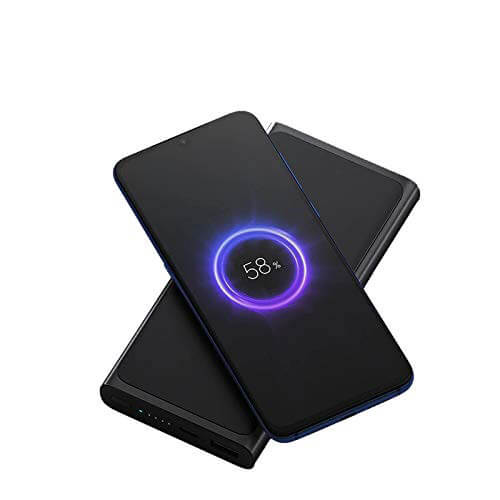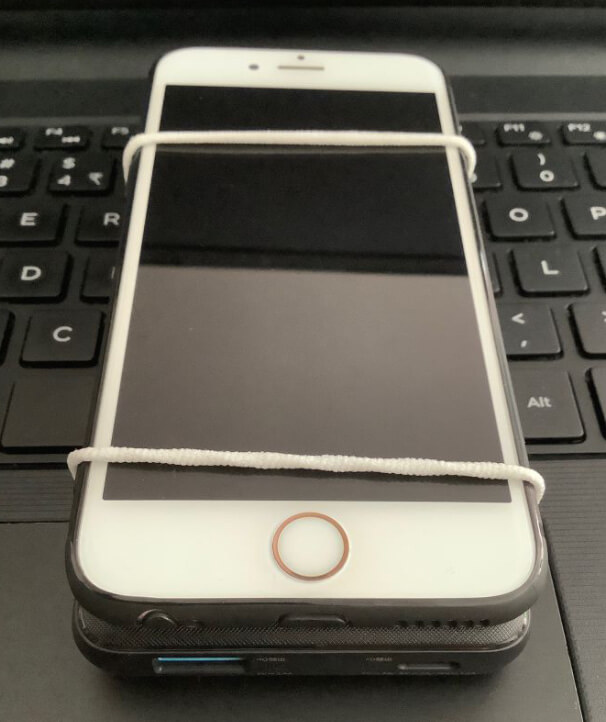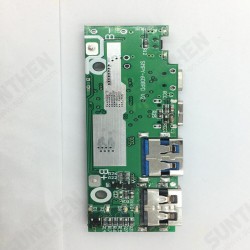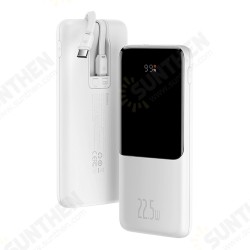
Power banks are very popular these days and with our increasing use of battery-powered equipment: everything from mobile phones to battery-powered headphones, portable speakers, and MP3 players can be charged via a power bank. They are effectively portable chargers, and may go under different names: battery packs, power banks, portable chargers, fuel banks, pocket power cells and back-up charging devices to name just a few. But whatever you call them, they all do the same thing.
A lightweight power bank or mobile battery pack that you can carry anywhere. They come in all shapes and sizes and here is a huge variance in the cost of different ones.
Choosing the right power bank for your particular use can be difficult. Knowing what the different specifications mean and whether they will affect the performance in the way you use it may not be obvious.
Overview of the parameters
Capacity
This "capacity" shows how much power can be stored in the battery pack.
At present, the power bank market is mainly divided into 5,000, 10,000, 200,000, and 30,000 capacity. Generally, the larger the capacity, the larger the volume and weight. Take care, if you bought a small -volume but large -capacity power bank, it’s likely to be a false capacity.

Rated Capacity
Except capacity, there are another important parameter people always ignored, that is, "rated capacity". Which means the output capacity of the power bank.
The rated capacity is the minimum power that can be output in the case of 5V2A (common) or 5V1A under the laboratory conditions. When the battery capacity is the same, the higher the rated capacity, the higher the conversion rate of the power bank;
The difference between the capacity and the rated capacity is because the electric energy must pass through the power transfer circuit, the charging cable, the mobile phone power management circuit, the internal resistance of the cell and Components will all cause power loss. As the charging power increases, this loss will become higher and higher. When the traditional 5V power bank is powered on the phone, there will be about 30%of the loss.
Meanwhile, if a device has multiple outputs then it may not be able to deliver the maximum current to all the outputs at the same time.
So if you want to get fast charge times, then buy a power bank with a high output current. If the phone or device cannot take the maximum current, don’t worry, it will only take what it can handle. Also, cause a power bank only writes the battery capacity, but no rated capacity, please take care, this manufacturer may not be a legally manufacturer.
Fast charging
A power bank with fast charging function will shorten your charging time quite a lot.
At present, almost all mobile phones that support fast charging are compatible with QC and PD protocols. It is recommended to purchase the power bank with QC/PD protocol, which can basically reach the charging power of 18W.
This power is sufficient for power supply of mobile phone. Generally speaking, unless you are loyal fans of a brand, it is not recommended to buy a power bank with private fast charge protocol, high price, low conversion rate will all be problems. You will rarely use it after change a new phone.
Note: The iPhone's fast charging can only be implemented through the USB-C interface. If the power bank does not have a USB-C interface, or the USB-C interface does not support two-way fast charging, it cannot be a fast charging for the iPhone.
Charging Port
There are three main types of input interfaces of power bank: USB-C (Type-C), Micro-USB, Lightning.
And two main types of output interfaces: USB-A, USB-C.

Early power banks only had a single output port, but with people using them more and more and wanting to charge multiple devices at the same time, many of the larger power banks come with two and sometimes more ports.
Just check that the output current capabilities for each port - are they enough? Also remember that if multiple devices are charged at the same time, the power bank may not give the maximum current to each port, there may be an overall maximum current output which will be shared between the outputs, slowing down the charging of the devices.
Battery Type
At present, the battery of power banks are mainly divided into two types: 18650 batteries and lithium polymer battery.
The cost of a 18650 battery is relatively low. At present, the main suppliers are Sanyo, Samsung, Panasonic, etc. The performance will be similar to the same supplier, except for the protective circuit. Which will be designed by a power bank manufacturer, unreasonable design can easily cause an explosion. At present, there are relatively few power banks using 18650.
The cost of polymer cells is high. The safety is similar with the 18650 battery and if it is not used properly will cause drums and burn also.
In general, the power banks of these two batteries will all have risks. We suggest you to select a popular brand with good quality ensurance to avoid any potential risk.
Use Scene Suggestions
Bring on the plane
Just pay attention to one parameter to bring on the plane: the battery capacity. (Not the rated capacity)
- The capacity below 100WH (27000mAh) can be directly bring on the plane.
- For more than 100WH (27000mAh) but less than 160H (43000mAh) can be taken on the plane after approval.
- More than 160Wh (43000mAh) power banks (including other lithium batteries) are prohibited.
Therefore, it is not recommended to buy a over 30000mAh power bank. Which is big and heavy and also cannot bring on the plane directly.
For Office Use
Personally, I think it’s no need to have a power bank for office workers. As it usually takes less than two or three hours to go to the office by subway, bus, or driving. If you really need a power bank, a 5000 or 10,000 one will be enough, as the larger one will cause trouble to carry out.
For Travel Use
According to personal experience, bring a 20000mAh will exactly enough to travel by train. Which could support a 24-36 hrs using in travel.
Tips: It is recommended to use a slow charging power bank on the train. The boost module and line thermal loss of fast charging are too large. With 18W fast charging, the conversion rate is generally between 50-60%. If you perfer playing while charging, the conversion rate is basically less than 50%. Which means, a 10000mAh power bank can only full charging a Android device with a 4500mAh battery.
Special Power Bank Purchase Guide
Notebook Power Bank
The output voltage of most laptop computers is 19.5V, and the power bank that supports 20V USB-C output can be charged for the laptop battery. But if the output power of the power bank is lower than laptop actual power, the notebook will charging the power bank in turn.
Therefore, only the power bank that supports 65W output can continuously power the laptop on the market. Those who do not reach this power can only be charged for the battery.
Solar Power Bank-Not recommended!
At present, the crystal silicon’s power generation for 1 square meter is only about 140W. Equal to the normal power bank size of 80*160mm, the power generation is only 0.16*0.08 *140 = 1.793w. Actually, it may only be 1W. This means it will take 37 hours to fully charged a 10,000mAh power bank.
According to the conversion rate of general power banks, it takes about 7 hours to fill the iPhone8 with a current of 5V2A. Unless you are far away from civilization and not able to find out any power, or the solar power bank is expensive and basically like a toy.
Charging Power Bank
Which combo the charger with a power bank, and costs more than an ordinary power bank. I used to have a 5000mAh charging power bank. After some times use, I found it’s slow to charge mobile phones and the output port seems broken. It was obvious that the output current became lower permanently.
If you want to have a charging power bank, I personally recommend you choose a large brand with more stable quality.

Wireless Power Bank
At present, most of the power of wireless power banks on the market is 10W. Compared with the faster wireless charger's 50W power, the charging speed is really slow.

In addition, I can hardly imagine the usage of wireless power banks. As the power bank is used in outdoor, so you will need to hold a power bank and a mobile phone at the same time in the hand, or you can only put it in the bag like this ......... But in this case, why not choose a power bank with charging cable?

Unless one day the charging power and induction distance of the wireless power banks can have a major breakthrough. Or I think it’s no sense to have a wireless power bank.
Private Protocol Fast Charge Power Bank
It is not recommended to choose a power bank private protocol as I mentioned before. It’s perfect if the power bank supports your mobile phone’s fast charge protocol. But in fact, it doesn’t matter as almost all fast charging mobile phones will support PD/ The QC protocol, and most all fast charging power banks will support these two protocols.
Summary
Well, I hope this complete power bank buying guide helped you in figuring out the best power banks for you. Just make sure to buy a power bank with a warranty, good battery capacity, and not too bulky. What are you waiting for? Go and shop for the best Power Banks for you! Any furthers, please contact [email protected] to discuss more.











1 Comment(s)
I appreciate the way you wrote this. Helped me get started with confidence.
Leave a Comment